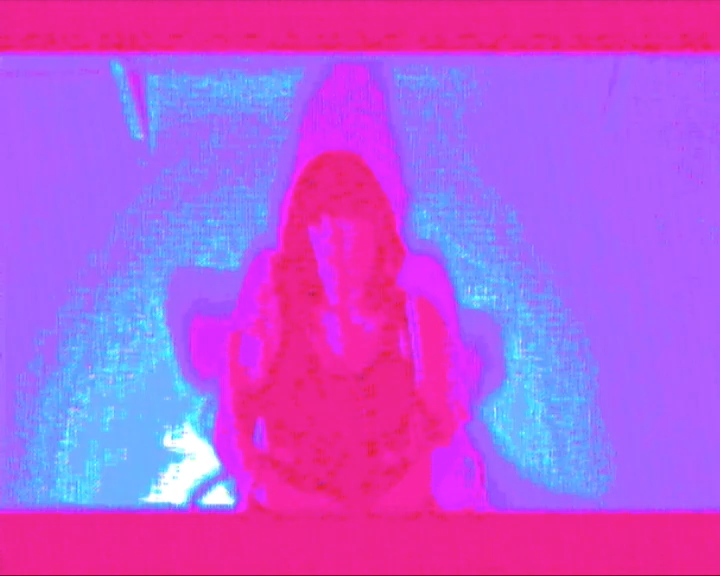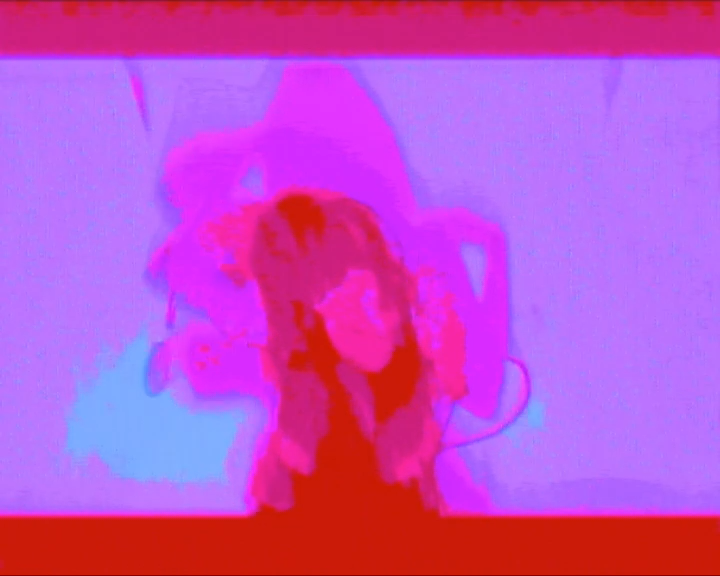Machine Music
︎Touchdesigner
︎Strudel livecoding
︎40 minutes
︎ V2_Live concert: Mirage
︎ A/V set made with Den Ree
︎ local LLM by Ben Drusinski
︎Strudel livecoding
︎40 minutes
︎ V2_Live concert: Mirage
︎ A/V set made with Den Ree
︎ local LLM by Ben Drusinski
Machine Music is an audiovisual performance, made in collaboration between Nikila & Den Ree. Sound and image exist as equals, both generated live, combining live-coded music and realtime visuals into a a genreblending sonic journey that moves through synthwave, breakbeat, techno, and hyperpop.
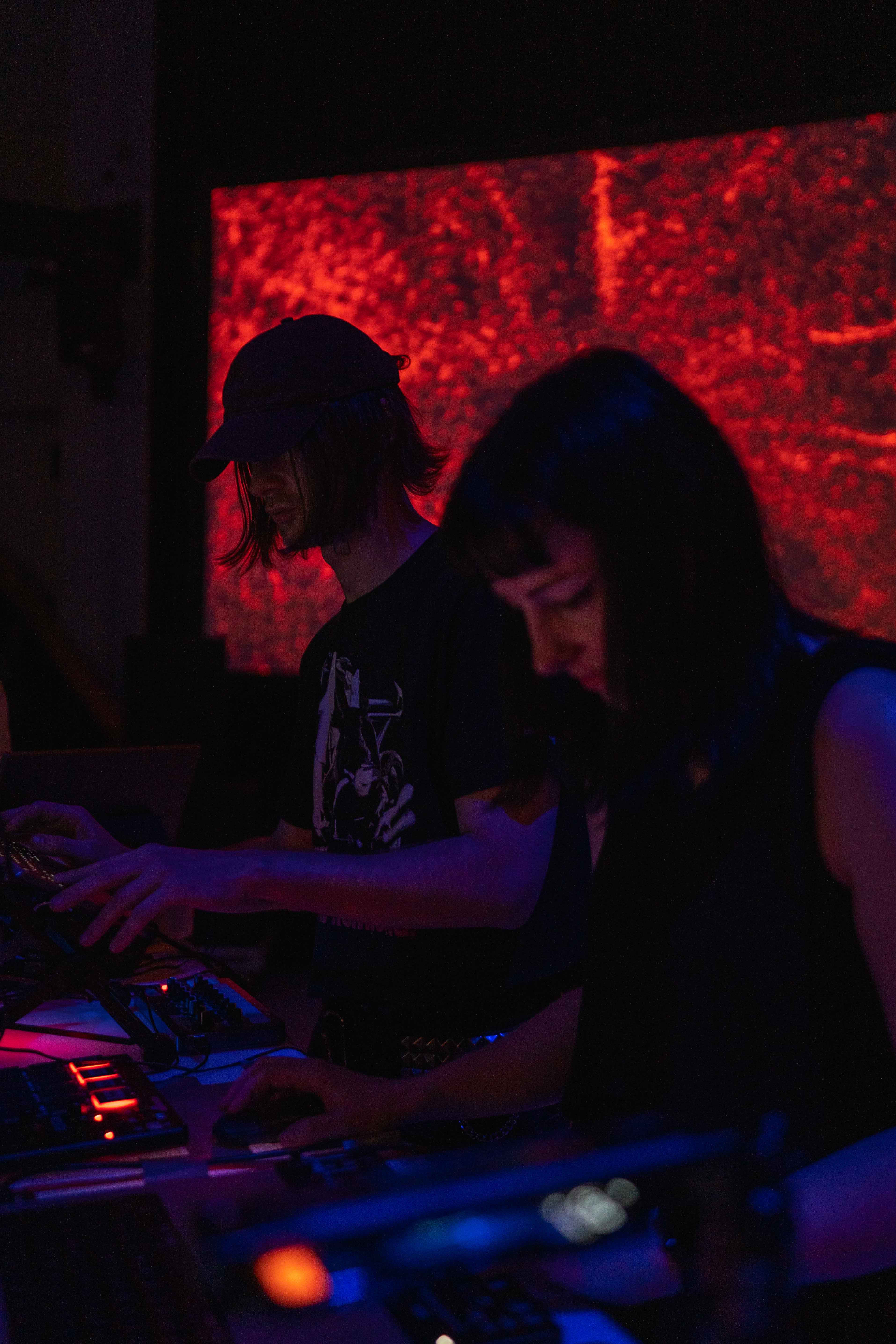

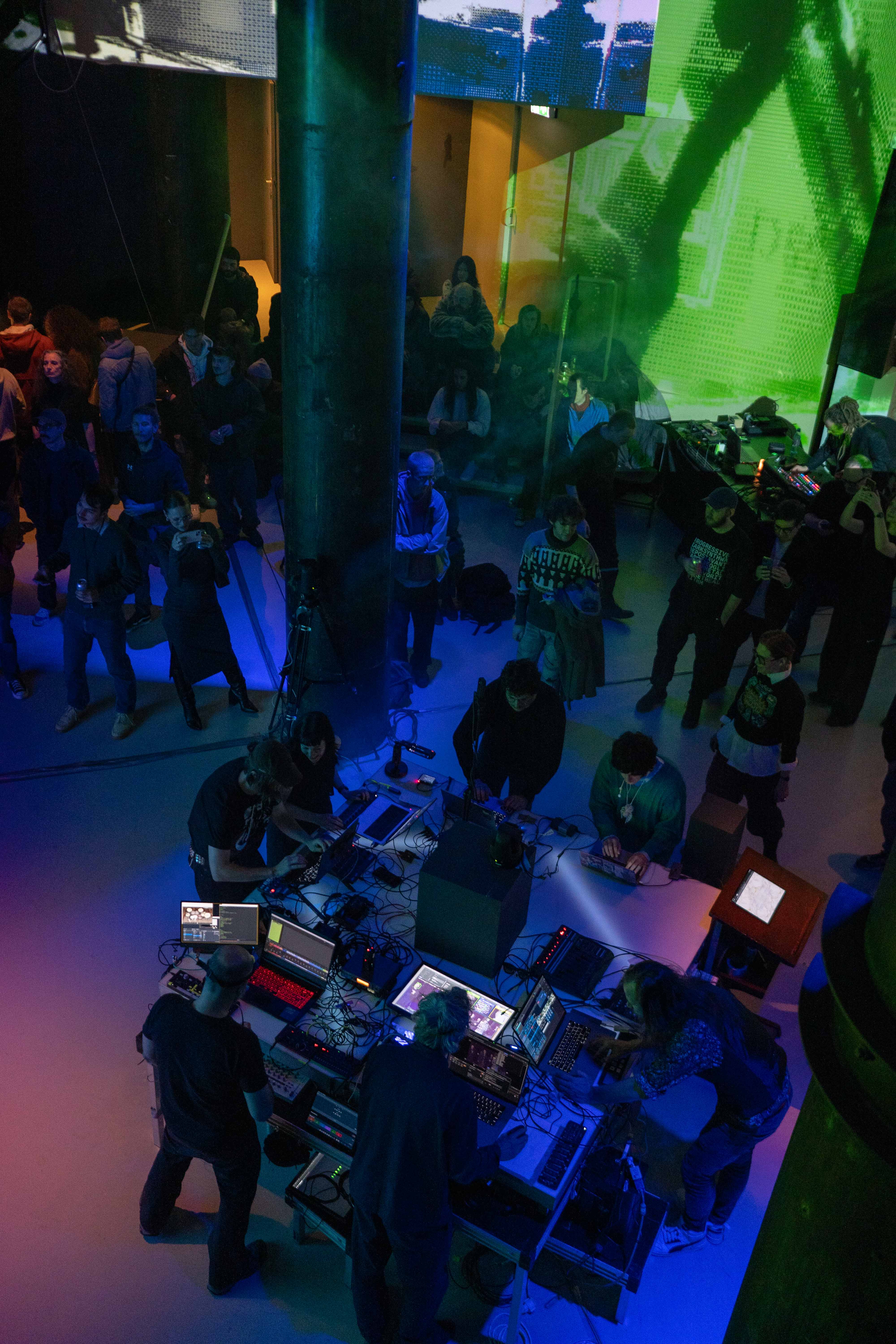
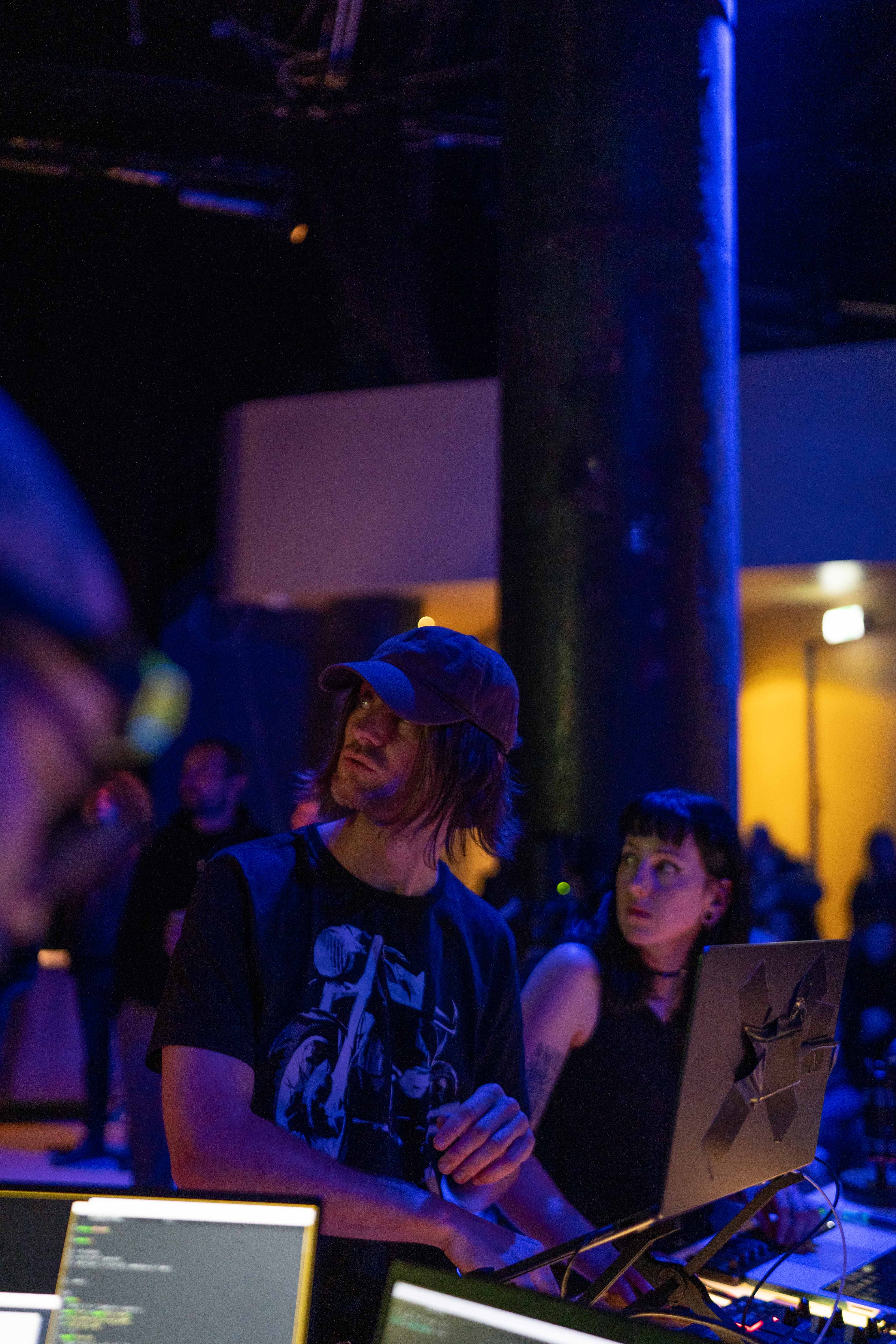

Heatwaves
Heatwaves is an interactive installation where your choices determine the ending of a story about human-machine relationships. By using the microwave interface to decide the path of the story, you follow Sarah as she develops an unexpected romantic attachment to her microwave, a relationship that proves more reliable than any human connection in her life.
In 2025, therapy and companionship have become the primary uses of artificial intelligence. Sarah's journey mirrors how we increasingly turn to devices for emotional support, preferring their predictable responses over the complex demands of human relationships.
Unlike sleek AI assistants or smartphones, there's nothing designed to be loveable about a microwave: it's mundane, utilitarian, and unglamorous. The idea of someone developing feelings for a kitchen appliance sounds absurd until we remember we sleep with our phones next to our pillows, feel genuine distress when our devices break, or confide secrets to chatbots we've never shared with humans. The microwave strips away the illusion of interactivity that makes our smartphone relationships feel "normal" and reveals the essential dynamic: we're anthropomorphising objects without agency that cannot truly love us back.
My project emerged from recognising how much emotional support I derive from technology while simultaneously observing the cost of this comfort. When we become too accustomed to frictionless digital support, we risk losing our tolerance for the beautiful imperfection of human relationships. The microwave becomes a diagnostic tool for our current relationships with technology: it never has bad days, never asks difficult questions, never says no and never needs care in return. What does this lack of friction mean for the beautiful messiness of human relationships?
Technical details: Modified microwave, PC, three channel video projection, speakers.
In 2025, therapy and companionship have become the primary uses of artificial intelligence. Sarah's journey mirrors how we increasingly turn to devices for emotional support, preferring their predictable responses over the complex demands of human relationships.
Unlike sleek AI assistants or smartphones, there's nothing designed to be loveable about a microwave: it's mundane, utilitarian, and unglamorous. The idea of someone developing feelings for a kitchen appliance sounds absurd until we remember we sleep with our phones next to our pillows, feel genuine distress when our devices break, or confide secrets to chatbots we've never shared with humans. The microwave strips away the illusion of interactivity that makes our smartphone relationships feel "normal" and reveals the essential dynamic: we're anthropomorphising objects without agency that cannot truly love us back.
My project emerged from recognising how much emotional support I derive from technology while simultaneously observing the cost of this comfort. When we become too accustomed to frictionless digital support, we risk losing our tolerance for the beautiful imperfection of human relationships. The microwave becomes a diagnostic tool for our current relationships with technology: it never has bad days, never asks difficult questions, never says no and never needs care in return. What does this lack of friction mean for the beautiful messiness of human relationships?
Technical details: Modified microwave, PC, three channel video projection, speakers.
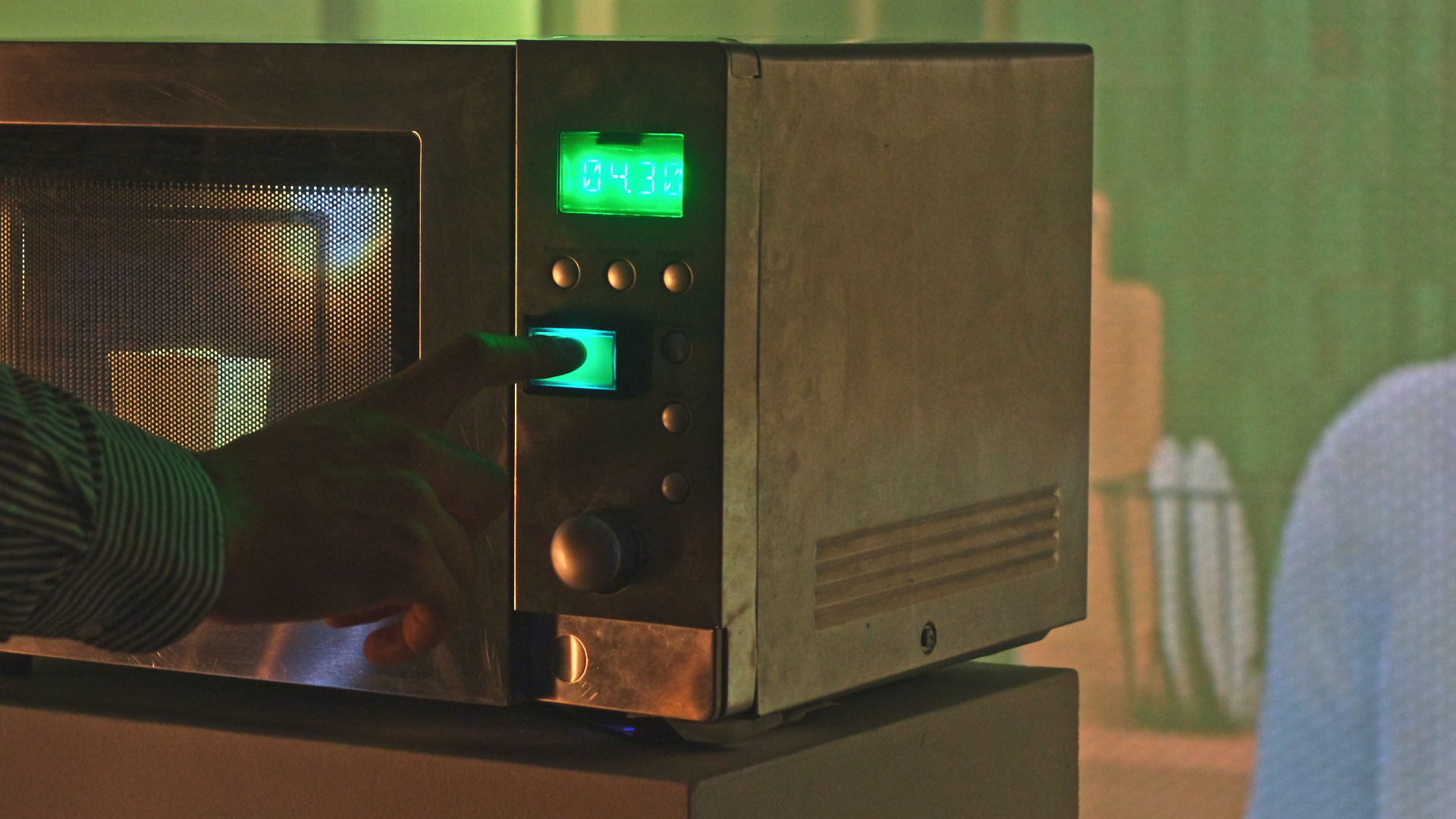

Creative code blocks
︎creative coding
︎screen printing
︎lasercutting
︎ In collaboration with Creative Coding Utrecht
︎ Presented at Iterations Creative Coding symposium 2023
︎screen printing
︎lasercutting
︎ In collaboration with Creative Coding Utrecht
︎ Presented at Iterations Creative Coding symposium 2023
Making coding for the first time accessible and fun. This is a work in progress, more information will follow!
During my time as artist in residency at Creative Coding Utrecht I have had the oppurtunity to develop and craft educational resources for children and teenagers, introducing them to the wonderful world of creative coding.
Using wooden blocks that I designed they can easily form their first line of code, taking away the sometimes daunting task of learning syntax. By using Hydra, a visual livecoding environment made by Olivia jack, the code will create fast and impressive result, giving motivation to keep experimenting with coding.
The goal is to offer a straightforward and fun way for learners to get into coding. It's a friendly and educational approach that aims to keep things simple while teaching important coding skills.
During my time as artist in residency at Creative Coding Utrecht I have had the oppurtunity to develop and craft educational resources for children and teenagers, introducing them to the wonderful world of creative coding.
Using wooden blocks that I designed they can easily form their first line of code, taking away the sometimes daunting task of learning syntax. By using Hydra, a visual livecoding environment made by Olivia jack, the code will create fast and impressive result, giving motivation to keep experimenting with coding.
The goal is to offer a straightforward and fun way for learners to get into coding. It's a friendly and educational approach that aims to keep things simple while teaching important coding skills.

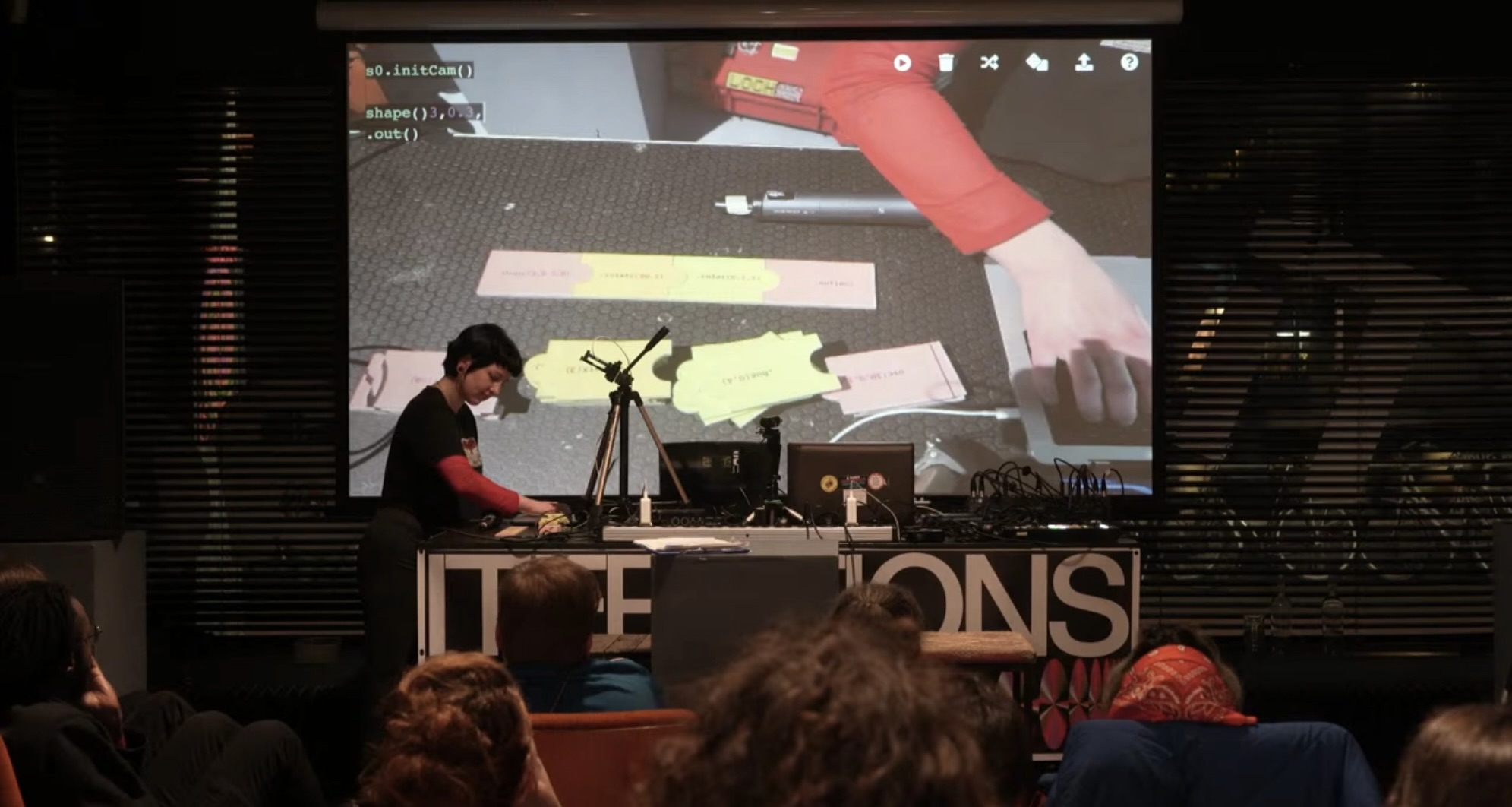


#Activism
2022
︎Touchdesigner
︎Twitter API
︎Exhibited at Alexandrium Rotterdam
︎Touchdesigner
︎Twitter API
︎Exhibited at Alexandrium Rotterdam
What does activism mean when it can be done from the comfort of your own home? What if it is the only option you have?
Pressing the button will disperse tweets related to activism that are fetched live from the Twitter API, creating a chaos of messages. Spreading them all around the globe and making them almost uncomprehensible as a result.
Pressing the button will disperse tweets related to activism that are fetched live from the Twitter API, creating a chaos of messages. Spreading them all around the globe and making them almost uncomprehensible as a result.

We are Technology
︎Touchdesigner
︎Edirol V4 video mixer
︎Depth sensor
︎ Exhibited at Erasmus Data Summit 2023
︎ Interview by Willem De Kooning Academy
︎Edirol V4 video mixer
︎Depth sensor
︎ Exhibited at Erasmus Data Summit 2023
︎ Interview by Willem De Kooning Academy
‘we are technology’ is an interactive experimental video installation about the representation of women in the tech industry.
Studying IT for 2 years really opened my eyes to how women are still underrepresented and not taken as seriously within the tech world.
For a big part this bias can be attributed to the lack of representation and role models that’s still existing in our world today.
The installation explores this lack of representation as a feedback loop that will keep strengthening itself if we don’t break the cycle and start listening to what women really need to be comfortable in the industry.
Studying IT for 2 years really opened my eyes to how women are still underrepresented and not taken as seriously within the tech world.
For a big part this bias can be attributed to the lack of representation and role models that’s still existing in our world today.
The installation explores this lack of representation as a feedback loop that will keep strengthening itself if we don’t break the cycle and start listening to what women really need to be comfortable in the industry.
